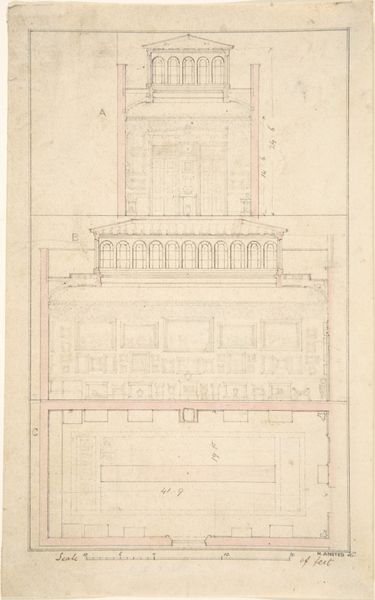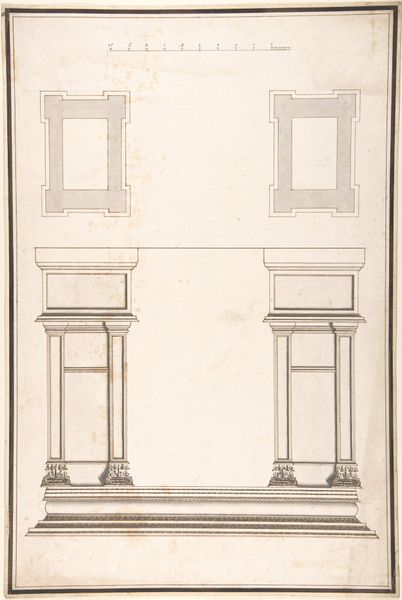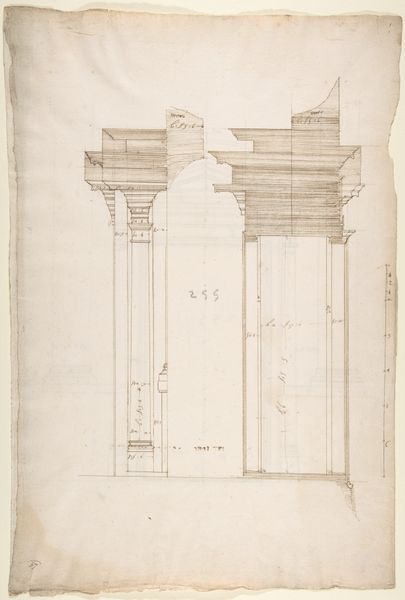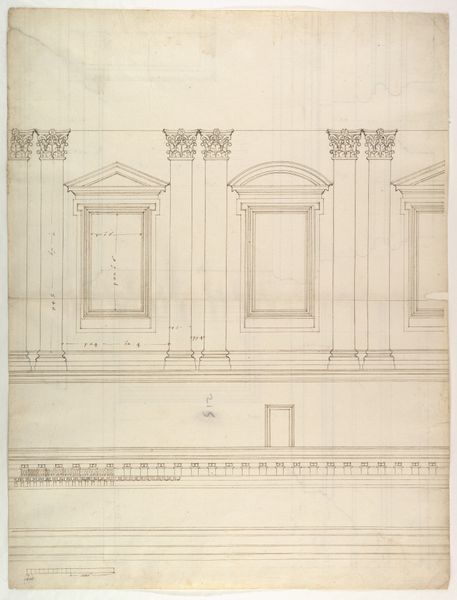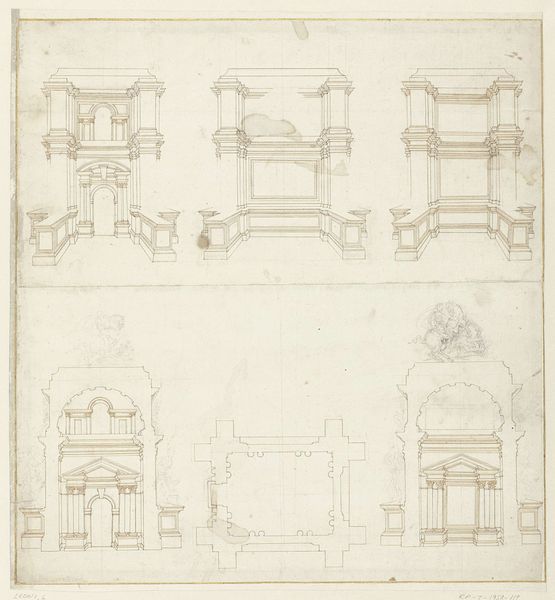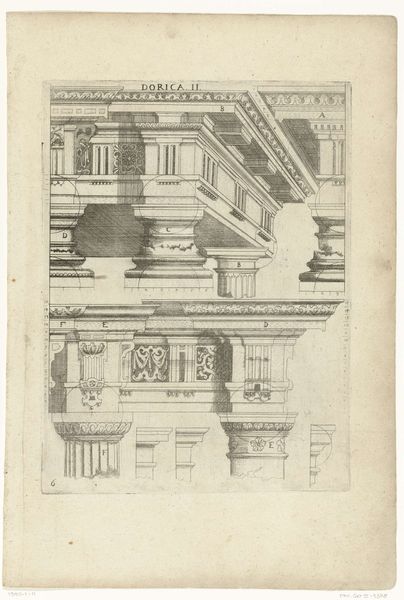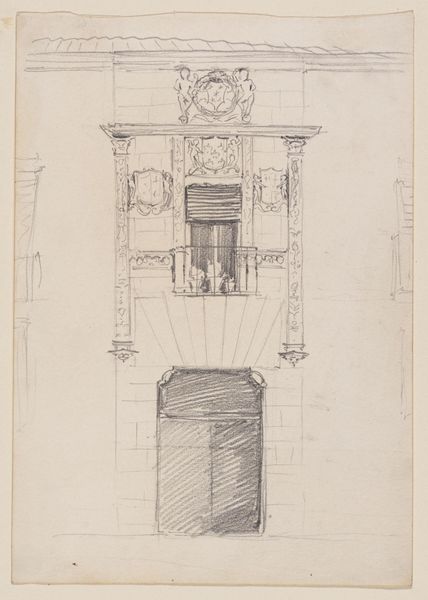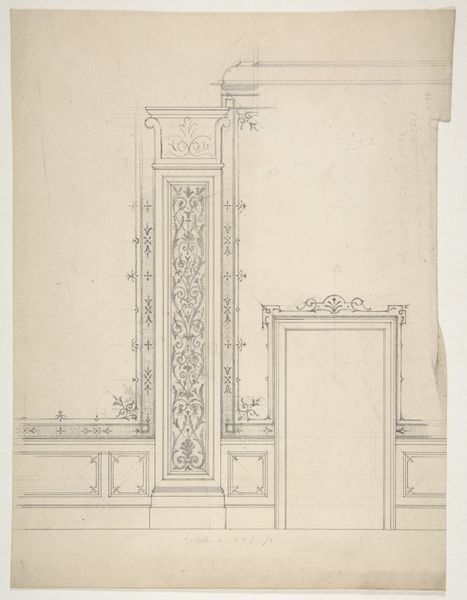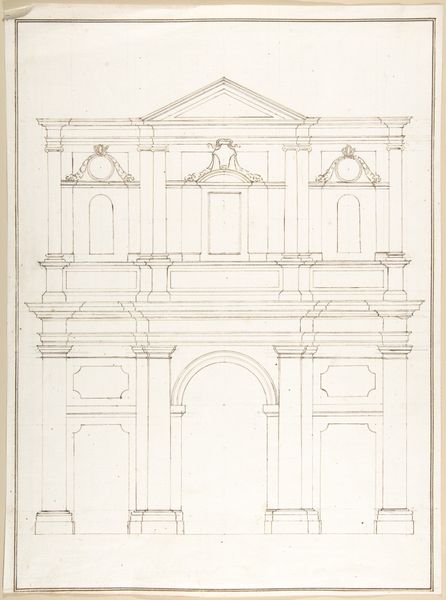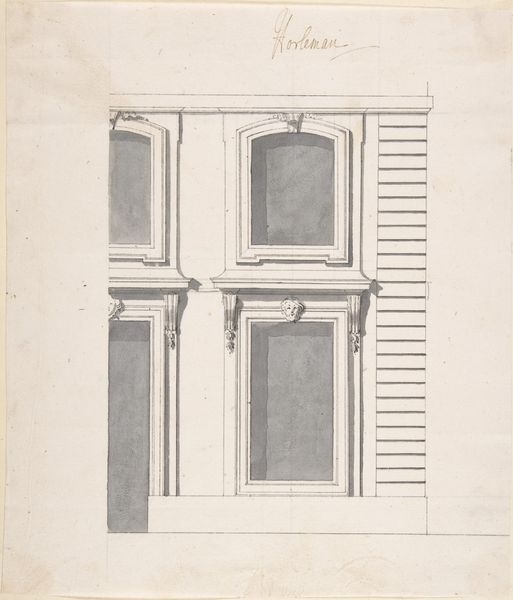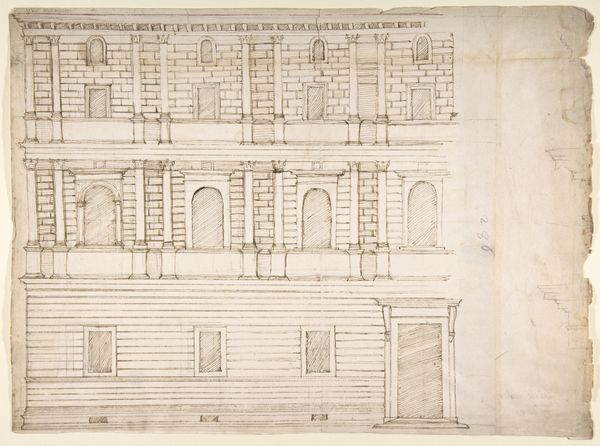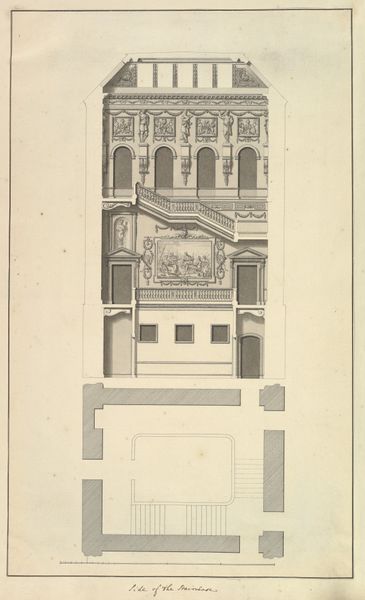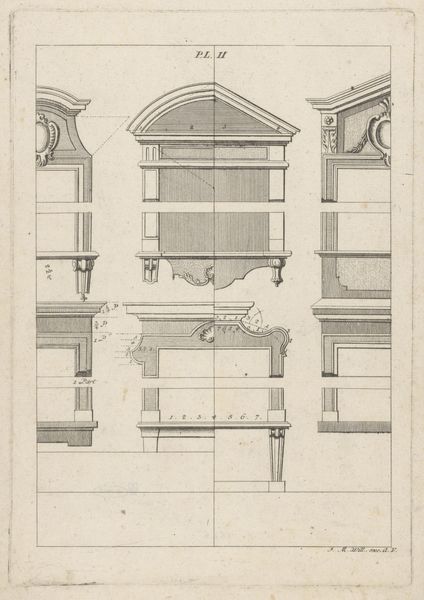
Ontwerp voor een vierkante porticus, kruisgewijs doorsneden, op de balustrade en in nissen standbeelden 1655 - 1740
0:00
0:00
drawing, paper, ink, architecture
#
drawing
#
baroque
#
classical-realism
#
paper
#
form
#
ink
#
geometric
#
line
#
architecture
Dimensions: height 541 mm, width 373 mm
Copyright: Rijks Museum: Open Domain
Curator: Here we have a design drawing rendered in ink on paper by Giacomo Leoni. Its full title is "Design for a Square Portico, Crosswise Intersected, with Statues on the Balustrade and in Niches," and it likely dates from between 1655 and 1740. Editor: My immediate impression is one of controlled fantasy, a beautiful contradiction. It's precise, almost clinical in its linework, yet it depicts a space ripe for theatrical happenings. Curator: That's an insightful reading. Leoni was instrumental in bringing Palladianism, a classical style characterized by symmetry and order, to England. Drawings like this showcase the core principles that would redefine British architecture for decades. The crosswise layout suggests not just a building but an entire planned environment, an intersection of social spaces. Editor: Absolutely. There's a latent grandeur that’s incredibly seductive. I love the implied narrative with those statues posed high on the portico and nestled in niches. They beckon; it feels like the prelude to some forgotten ritual or noble assignation. It reminds me a little of Piranesi’s more whimsical fantasies. Curator: Yet Leoni never reached the overtly theatrical Piranesi stage. His use of classical realism anchors this design. While evocative, it ultimately speaks to structure, rational organization, and the enduring appeal of classical ideals during a turbulent era. It’s worth noting that this blueprint transcends function. It communicates status and projects the image of a cultivated patron. Editor: I see that completely, but I can't shake this sense of controlled dream space. Imagine stepping through those archways... each view so carefully curated and shaped. You feel almost as though it is possible for anyone, entering that designed space, to play the heroic characters posed so decoratively in the frame of the blueprint. It gives you ideas! Curator: Indeed. Thinking about the societal function behind this image as a blueprint, this square portico represents something monumental – an idea of permanence through design. Editor: To me, it is less a symbol of endurance and more like stepping into someone else's elegant fantasy. I mean, think of how architecture might change the way a person conceives their reality – what a legacy to leave.
Comments
No comments
Be the first to comment and join the conversation on the ultimate creative platform.
